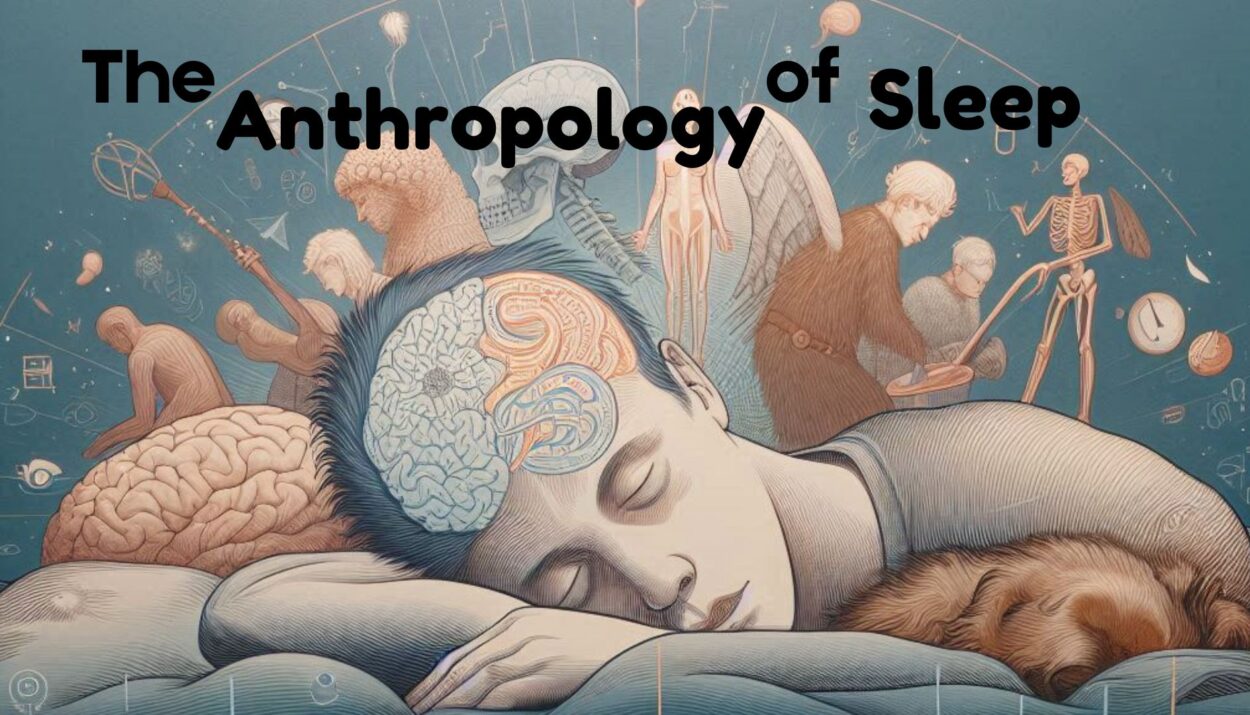There is no greater pleasure than sleep when one is genuinely exhausted, and the sensation of getting into bed, pulling up the covers, resting one’s head, and drifting off to sleep is sheer euphoria. Anyone who has ever experienced the weight of fatigue release when they give themselves over to rest will find great resonance in this experience. We usually deny ourselves adequate sleep during the workweek, preferring to put work, social activities, or entertainment ahead of relaxation. Many people seek to make up for lost sleep on the weekends due to the cumulative effects of chronic sleep deprivation.
We have a strong affection for sleep. Individuals frequently convey their fondness for sleep by stating, “I love sleep.” However, strangely, we often give higher importance to other activities instead of prioritizing them. Sleep often becomes a secondary concern, whether it’s for watching television late at night, indulging in an unending social media scroll, or finishing work-related activities. It is not new to us that our preference for sleep and our tendency to put it off conflict. It’s a sign of the fast-paced, high-stress lifestyle that many of us lead.
Concept of sleep
Sleep is a reversible state of rest that is readily distinguishable from a coma or other forms of unconsciousness. It can be easily disturbed, returning us to a state of consciousness. During sleep, our degree of consciousness and responsiveness to our surroundings is significantly reduced, albeit not completely gone. This is why sudden noises can awaken us from sleep. An intriguing occurrence during sleep is the rebound effect when the body strives to compensate for sleep deficiency by increasing the amount of sleep during subsequent times of rest. These findings suggest that sleep is not a static condition, but rather comprises various stages that our bodies go through in a recurring pattern each night.
Sleep is comprised of two main states: non-REM sleep and REM sleep. During moments of awake, our brain oscillates between these two states. Non-REM sleep includes several stages, with each level progressively becoming deeper, whereas REM (Rapid Eye Movement) sleep is the phase in which most of our intense dreaming occurs. A sleep biologist can differentiate these stages by employing an electroencephalogram (EEG), a gadget that measures the brain’s electrical activity. REM sleep is not simply a heightened stage of non-REM sleep. It is an autonomous condition characterized by rapid eye movements and increased brain activity that resembles awake.

There are three categories of sleeping culture concepts: monophasic, biphasic, and polyphasic. Monophasic sleep cultures consolidate sleep into a solitary uninterrupted period. For example, eight hours of sleep a night is frequently recognized as optimal in Western culture. Biphasic sleep patterns consist of a nocturnal sleep cycle lasting 4 to 6 hours, then a daytime nap lasting 60 to 90 minutes. Empirical evidence indicates that following siesta sleep patterns, which involve taking a nap around the sixth hour of the day, will improve mood, alertness, productivity, and learning abilities. In polyphasic sleep cultures, people go through multiple stages of sleep at irregular times during the day and night. Inemuri is a Japanese technique in which persons experience a state of half-sleep or quasi-sleep while being present in a location that is not designated for sleeping. In this technique, sleeping is regarded as a secondary or inferior activity.

The Biological Dimension of Sleep
Biologically, sleep is essential for physical and mental health. It is during sleep that the body undergoes critical repair processes, consolidates memories, and regulates hormones. Sleep deprivation can lead to a host of health problems, including weakened immune function, impaired cognitive abilities, and increased risk of chronic conditions such as obesity, diabetes, and cardiovascular diseases.
From an anthropological perspective, the biological need for sleep is a constant, but how this need is met can vary. For example, the duration and timing of sleep can differ widely. Based on a recent survey, the average sleep duration for individuals residing in Madagascar is 6.5 hours per night. Similarly, the Hadza hunter-gatherers often sleep for an average of 6.2 hours per night. Despite the absence of television, social media, and artificial lighting, these communities actually sleep slightly less than Western societies, which typically sleep an average of seven hours every night. Finland had the longest average sleep duration of 8 hours, while Japan had the smallest overall sleep duration of less than 7 hours among the surveyed nations.
Can the Sleep Cycle of Humans Be Changed?
Is it possible for me to transition from being a night owl to naturally waking up early in the morning? Is it necessary to wake up at 6 am? Delayed sleep phase disorder is a condition in which the body’s internal biological clock is out of sync with the external environment.
The body clock, also known as the circadian rhythm, is an innate activity that occurs approximately once every 24 hours and controls the cycle of wakefulness and sleep. It is powered by the suprachiasmatic nucleus (SCN), which is housed in the hypothalamus and is the body’s internal clock. The body’s internal clock synchronizes with the environment through the influence of external stimuli like temperature and light.
Numerous physiological functions, such as hormone release, body temperature, and metabolism, are regulated by the circadian rhythm. The control of sleep is one of its most important roles. Exposure to natural light throughout the day promotes alertness and wakefulness by maintaining the circadian rhythm in line with the day-night cycle. The SCN triggers the synthesis of melatonin, a hormone that makes people feel drowsy and gets the body ready for sleep, as dusk draws in and the amount of light drops.
Sleep difficulties and other health problems can result from circadian rhythm disruptions, which can be brought on by shift work, jet lag, or exposure to artificial light at night. Encouraging natural light exposure during the day and adhering to a regular daily routine can both promote a healthy circadian rhythm. Recognizing and honouring this natural cycle is essential for overall well-being since it improves mood, quality of sleep, and general health.
Read- Yoga: An Anthropological Exploration of Ancient Wisdom
Cultural Influences on Sleep
The geographical and environmental conditions of sleep might vary significantly among different civilizations. It is common practice in many Western nations for people to sleep alone or with a partner in a private bedroom that is cool, dark, and has comfortable bedding. Nevertheless, communal sleeping is customary in numerous regions across the globe. For instance, in Japan, it is customary for family members to sleep together on futons placed on the floor. This method not only saves space but also promotes a feeling of familial intimacy and safety.
Cultural differences also influence pre-sleep practices. In the United States, nighttime routines commonly involve engaging in activities like reading or listening to music. Conversely, in some African societies, the practice of storytelling or engaging in social activities frequently occurs before going to sleep. Tibetan monks practice a unique form of meditation called dream yoga, in which they develop the ability to maintain awareness and consciousness while sleeping. Social and spiritual significance are attached to the exchange of visions within the Aboriginal Australian community. Dreamtime narratives passed down through generations, are considered as being reservoirs of profound knowledge about past, present, and future happenings. These routines instil a sense of relaxation and preparedness for sleep, which can have a major impact on the level of sleep.
Conclusion
Understanding the complexities of sleep and its different stages highlights the importance of prioritizing and maintaining good sleep hygiene. Regular, uninterrupted sleep is beneficial for several reasons, including mental and emotional health, in addition to physical health. Therefore, despite our busy schedules and the numerous distractions that strive for our attention, it is crucial to prioritize getting enough sleep for our overall health and happiness.
References
Cheung, B. Y., Takemura, K., Ou, C., Gale, A., & Heine, S. J. (2021). Considering cross-cultural differences in sleep duration between Japanese and Canadian university students. PloS one, 16(4), e0250671. https://doi.org/10.1371/journal.pone.0250671
Kanda, T., Tsujino, N., Kuramoto, E., Koyama, Y., Susaki, E. A., Chikahisa, S., & Funato, H. (2016). Sleep as a biological problem: an overview of frontiers in sleep research. The journal of physiological sciences: JPS, 66(1), 1–13. https://doi.org/10.1007/s12576-015-0414-3
Ma MA, Morrison EH. Neuroanatomy, Nucleus Suprachiasmatic. [Updated 2023 Jul 24]. In: StatPearls [Internet]. Treasure Island (FL): StatPearls Publishing; 2024 Jan-. Available from: https://www.ncbi.nlm.nih.gov/books/NBK546664/
Summer, J., & Cotliar, D. (2024). Can you change your circadian rhythm? Sleep Foundation. https://www.sleepfoundation.org/circadian-rhythm/can-you-change-your-circadian-rhythm#:~:text=You%20can%20reset%20your%20sleep,%2C%20eating%2C%20and%20other%20factors
Braun, A. (2017, June 22). The once-common practice of communal sleeping. Atlas Obscura. https://www.atlasobscura.com/articles/communal-sleeping-history-sharing-bed







